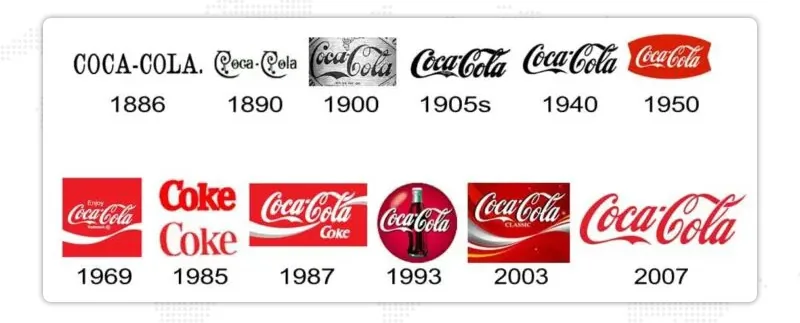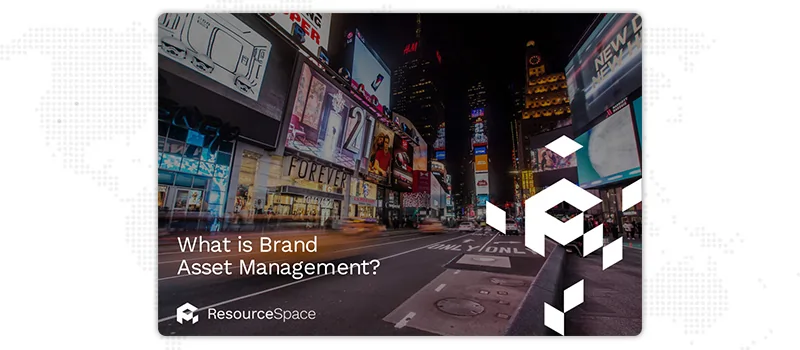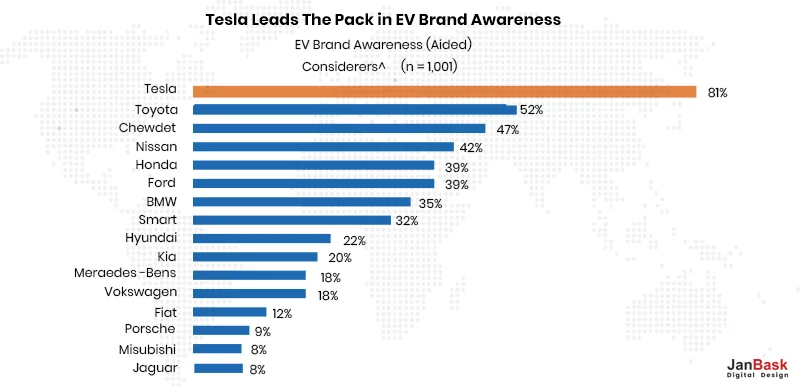
No matter how big, medium, or small a company is, Branding is essential to every firm. Branding facilitates faster, less risky, and more straightforward consumer decision-making. Instead, Consumers prefer to buy from a well-known and reputable brand than someone they have never heard of before. Especially in a competitive market, a company’s brand can become a competitive advantage.

Understanding the definition of “brand” is the first step in managing a brand. It entails developing a promise, making it, and keeping it. It entails defining the brand, positioning it, and communicating it.
Brand management is the science and art of developing, innovating, and sustaining the brand. Customers become loyal to your company because of your brand and stay with you even through thick and thin because of the perceived value that your brand has created in the minds of your consumers.
A strong brand differentiates your product/services from your competitors based on the emotional response you create in the consumer’s mind.
Brand management touches all aspects of a brand. It includes managing the tangibles and intangible characteristics of a brand. So when it comes to the brand, what are your brand's tangible and intangible aspects?
Tangibles include the product itself, the pricing, the packaging, etc. While for service companies, the experience of the customers is among the tangibles. Emotional ties to the good or service are among the intangibles.
Branding is the process of combining a mixture of marketing components into a single entity to establish your identity in the eyes of your audience. It simply involves capturing your brand’s identity in the minds of your customers, conveying the impression of an experienced, sizable, and bankable entity they can trust upon given its brand equity.
Branding aims to communicate the brand’s message, foster customer loyalty vividly, encourage the buyer to purchase the goods and build an emotional connection with the audience.
Customer views of the product are shaped through Branding. It must raise and enhance the client’s expectations for the good. The main goal of Branding is to differentiate products, and if the product is a commodity, it is still possible to differentiate it in buyers’ perceptions.
Companies with a strong brand have a significant market share. The brand needs strong backing and support to sustain itself long-term. All brands must be managed, and brand equity must be developed over time. Here’s where brand management becomes essential and practical. Brand management helps in building a strong corporate image, and a brand manager oversees the overall brand performance, whether it’s print, digital, social media, or influencer marketing.

Looking for the Best Branding Services?
The Nike brand has tremendous equity, which is one of its key advantages. Nike is an expert at creating brands, and the tagline "Just do it" has evolved into more of an idiom than an advertising catchphrase.
As of June 14, 2023, Nike will have a net worth of $173.46 billion, making it one of the most valuable brands in the world. A closer look at the responsibilities of Nike's various departments indicates that presenting the Nike brand's story is a central part of the company's international marketing efforts. A genuine brand story helps set a company apart from competitors and gives the company a personality to reckon with.
The goal is to make the audience participate in the narrative, which is obviously only possible by purchasing Nike goods. Additionally, Nike's massive celebrity endorsement program has contributed to the development of a strong brand identity and brand personality.

Involvement in a marketing sense is the relevance a person attaches to a certain product or brand, based on their needs, values and interests (Solomon, 2010).
Consumer marketing may be challenging to implement for low-risk, low-involvement products. In these markets, a relationship with the supplier frequently adds little value for the consumer. Consumer marketing is best suited for products with high levels of involvement. The involvement with Nike products is considerable because a substantial portion of the customers use NIke’s products as a means of self-expression and to be accepted within their peer groups.
Nike with its masterful storytelling has given each of its customers a sense of belonging for almost 50 years. Nike's customers should be conscious of their strengths and develop the desire to go further, faster, and higher.
Understanding the consumer is just part of good marketing but it isn't everything to make a brand successful. Additionally, you need to understand the brand. The premise is the same whether you're talking about the core consumer or an average person on the street: you have to figure out what the consumer wants and you need a vehicle to understand it.
Nike spent a lot of time working at the grassroots level to comprehend the remaining levels of the pyramid. Stakeholders attended amateur sporting events, talked to individuals at gyms and tennis courts, spent time in stores observing activity across the counter, requested dealer reports, conducted focus groups, and monitored ad response rates.
The entire experience forced Nike to identify the true meaning of the Nike brand and showed them the value of focus in order to be at their best and doing what they do best.
“It takes 20 years to build a reputation and five minutes to ruin it. If you think about that, you’ll do things differently.” -Warren Buffett.
Here are five reasons why brand management is important:
One of the essential elements of brand management is brand awareness. If customers don’t know who you are, they won’t think of your brand when it’s time to make a purchase. As a result, they will choose to buy the goods or services of your competitors.
Have you heard the expression, “You don’t get a second chance to make a first impression?”? For instance, your brand’s packaging serves as the customer’s first point of contact. Brand management allows you to keep your Branding fresh and memorable so that it leaves a lasting impression on clients as they interact with you.
Consumers offer confidence and loyalty with the implicit assumption that the brand will operate in specific ways and offer customers value through consistent product performance, suitable pricing, promotion, and distribution programs, and actions.
Customers are more inclined to keep buying a brand if they understand its advantages and benefits and feel satisfied after using the product. Customers place a high value on brands in specific product categories because they allow them to express and communicate themselves. Brands are often employed as symbolic objects in these situations as they allow consumers to express themselves to their peer groups.
Brand management will only succeed in fiercely competitive and fast-paced marketplaces if the brand adheres to its basic principles, uniqueness, and core values. Therefore, it is crucial for brands to maintain consistency across all of their brand touchpoints. You have the chance to make sure that your brand’s visible and intangible components are cohesive by using brand management.
Customers feel more at ease when a brand is consistent since they know what to expect each and every time they interact with it. A brand is more than a product since it may have characteristics that set it apart from its competitors.
Here’s a representation of how Coca-Cola evolved over time while preserving its level of consistency and brand familiarity.

You must ensure your messaging is consistent to provide your brand with a solid foundation. Ultimately, consistency helps build brand recognition, which encourages client loyalty. (There is no pressure).
Let’s look at Coca-Cola to understand its level of consistency. Every aspect of the brand’s marketing is cohesive as a result of its dedication to consistency. As a result, it has developed into one of the most recognizable brands worldwide.
With the expansion of e-commerce, where international boundaries have diminished, customers are increasingly purchasing products and services from brands that are not local to taste the brand ethos of different countries, cultures, and faith. Therefore, it is crucial to consider maintaining brand equity in various market segments and, when appropriate, to take into account global challenges and brand strategy.
Consumers don’t need to put a lot of extra thought or information processing into choosing a product if they are familiar with a brand and have some knowledge of it. Therefore, from an economic standpoint, brands enable customers to reduce product search costs both internally (how much they must think) and externally (how much they must seek around).
This way, consumers can make assumptions and establish reasonable expectations about what they may not know about the brand based on what they currently know about it, such as its quality, product attributes, and so on.
Therefore, you will definitely see a rise in brand loyalty when your brand is well-handled.
In recent years, marketing has seen a number of changes. The benefits consumers receive from the things that businesses sell have changed significantly along with the customer. The modern marketing landscape has also changed due to the world’s digitization.
The real effort starts once your brand is established. Your brand needs to be constantly maintained. Your brand’s logos, taglines, and editorial messages should be in sync with the brand book. Facebook, Twitter, and Instagram should convey the same brand tone and vibe as brochures and mailers. Brand management’s responsibility is to strengthen and improve the brand over time consistently.
The degree to which a brand manager may influence the meaning of a brand has diminished with the shift to digital. The growth and spread of large social media platforms have ushered in a time when people are interacting with brands that they find relevant. The moment your audience realizes your gimmick, they will distance themselves from your brand. Real-time conversations are happening on a massive scale where audiences are conversing on social media with the brands if they find an emotional connection.
You need to think about online Branding in your strategy as a marketer or brand manager in the digital age and how you can use online channels to assist your brand.
Do you want your company’s brand to be as good as Coca-Cola’s or even surpass it?
Brands greatly impact customer engagement, market competition, and corporate management. A company’s products are set apart from its rivals by a strong brand presence in the marketplace, fostering brand loyalty for its goods and services.
A brand that has already gained mileage must use brand management to stay relevant in the market and to keep up with its reputation. Efforts to increase brand recognition, manage brand equity, find and accommodate new brand products, and strategically position the brand in the market all promote a consistent brand message.
It takes years of hard work to develop a brand. A brand must be maintained through innovation and creativity once the brand identity has been created and has surpassed the expectations of its establishment. A great brand doesn’t get built overnight, but it takes a team to develop a brand that connects with the audience. Today we have millions of brands but hardly a half dozen brands that we can look forward to. Disney, Coke, Apple, Sony, and Starbucks are a few notable brands that have kept themselves relevant even today through their strategic brand management.
Today companies are investing millions in the strategy and execution of brand initiatives. New studies are periodically released to establish numerous approaches to brand management, and various frameworks are created. Many branding, re-branding strategies, ideas, theoretical frameworks, and methods have emerged in the field, leading to a wide range of viewpoints on how a brand should be managed. A single lens makes it nearly hard to discern a brand. However, experts have grouped various approaches to Branding into seven schools of thought, encompassing the entire branding universe.
This model incorporates the classic marketing mix parameters, or the four Ps, which are essential for creating a brand strategy. It is a simple, practical, and economical form of marketing where businesses compete for customers’ business based on pricing, leading them to select what they require or desire based on price. The social and economic spheres are constantly in balance.
We visit particular stores because of a desired identity or self-image. Companies utilize, for instance, narrative in marketing as one of their primary brand value creators. Additionally, who we speak to has an impact on our decisions. Positive reference: persons of the same sort influence other persons of the same kind.
What do our customers desire? Measuring and observing clients’ behavior to provide an environment and items that suit their demands. Companies are aware of the many types of customers so that they can provide the ideal branding services to the intended clientele. Interviews and experiments are two examples of observational techniques.
This strategy uses product placements to persuade viewers or customers to purchase the same products in movies, music videos, sporting events, etc. The core of this strategy is sponsorship. Customers can employ the same brands as James Bond by purchasing the clothing or accessories that their favorite character wears in a movie, giving them the impression that they are James Bond. Because people always seek to project an image of themselves to others and because businesses can support, for instance, particular lifestyles or ideals, branding through personality is beneficial.
Businesses leverage the dyadic relationship between a customer and a brand to foster a sense of friendship.
For loyal customers, businesses frequently refer to bonus cards, direct emails, and customer events. Companies hope to compile pertinent data about the behavior of their clients through these activities. As a result, businesses can concentrate heavily on the unique interests of their customers. Additionally, customers feel appreciated and are given the impression that they are directly connected to the business through one-on-one conversation.
Most people desire to be a part of a community or social setting. What should a secretary at a large financial institution or an advertising firm wear? Can they wear the same attire? Or are they supposed to wear acceptable attire? Ethnography and community ideas are used in the community approach to understanding clients.
Cultural consumptions are a component of this strategy. What clothing habits have we picked up? Can we influence the newest customer group? Brands like H&M and ZARA offer clothing for both children and adults. How will it impact us if we visit the store with our parents? Do we continue to frequent H&M as adults because it is our habit?
This method uses the eagle’s eye view to anticipate potential future events and considers how the world evolves, such as how consumer trends affect business. “No Logo” and other catchphrases are among the keywords.
Sometimes, more than one branding strategy is required. These days, a corporation may use a combination of different branding models. There isn’t “the” ideal strategy or model. However, a definite tendency can be seen in all of these discussed approaches.
The conventional one-way sending of brand communication (such as the economic and identification methods) is changing significantly in favor of a major emphasis on addressing the contextual and cultural influences on the brand (such as the cultural approach). Companies must first comprehend these models’ fundamental principles and concepts to understand brand management comprehensively. Additionally, they must acknowledge and understand that their consumers own the brand and influence its development.
Digital brand management or online brand management uses traditional brand management principles when it comes to consumer experiences across various digital platforms,
In this case, the emphasis is frequently on direct consumer interaction, where social media platforms (such as LinkedIn, Facebook, Instagram, and others), applications, and websites enable your business to interact directly with your target market like never before.
Digital brand management, which includes everything related to how your client interacts directly with your brand via digital means, from landing pages and apps to your complete online content strategy, is an evolution of the direct marketing strategy.
Successful businesses use social media, website content, and mobile applications as part of a long-term brand content management plan to increase brand awareness, engage with customers, and broaden their market reach.
Online brand management has the potential to boost brand equity in a market that is becoming more competitive while also enhancing profitability.
Successful digital brand management ultimately depends on consistency, just like traditional, physical marketing does. This keeps your brand memorable and also boosts your search engine rankings.
Global brands like Apple and Coke succeed because of their uncompromising dedication and commitment to maintaining consistency across all platforms. This is because their products and logos are instantly identifiable to consumers who know what these brands stand for.
When it comes to digital brand management, not all businesses will have the financial resources of these international mega-brands. However, by concentrating on these fundamental principles, any firm may be motivated by the achievements of these brand development giants to foster a distinct brand identity that is constant and prospers in the digital environment.
Focus on these core guidelines and thrive in the digital landscape:
Companies must take into account new variables while strategizing their digital brand management, in contrast to traditional, physical marketing:
How can you tell if your strategy is effective and that your clients are interacting with your brand online? To monitor the success of your strategy for managing your digital brand, you may use several online tools.
Google Alerts provides email notifications when Google comes across a certain name or phrase. At the same time, more specialized social media tracking programs track brand mentions and analyze your social media traffic for you.
A clear brand proposition and regular social media content is essential for managing digital brand identity, but additional crucial elements are frequently overlooked.
This entails how each employee represents your brand in emails, letters, PowerPoint presentations, etc. Your brand identity must be consistent both on social media profiles and on these communication channels.
Your employees publish a variety of papers online or distribute them via social media, including presentation slides, manuals, and various PDFs. Make sure that they are consistent with your brand book.

Of course, the issue with best-practice templates is that, unlike brand identity, they are static. To stay relevant and adapt to the competition and the demands of a changing market, branding elements like imagery, logos, details, company promotions, and legal rules keep changing to set the standards of the brand. So in this unprecedented time, we must stay flexible and consistently distinguish your approach from the competition.
Even growing businesses that have employed digital brand managers to oversee their brand identity discover that these managers need help to enforce compliance with digital assets in the hands of their team members.
How can entrepreneurs, proprietors of small businesses, and multinational enterprises perform excellent digital brand management while maintaining brand consistency like the top players? Utilize digital brand management tools and document management software to make your templates dynamic. There are a lot of free and paid document management software available online.

Your brand is a moving hub of different touchpoints, such as colors and typefaces, to nuances like sounds, fragrances, and values. You worked very hard to create these components to strengthen and promote your brand name. Your next move must be to proactively manage these brand assets so that the team can identify and use them so that it doesn’t lose its essence.
It can’t be overemphasized how vital brand asset management is. No matter who works on your projects, it’s the greatest approach to guarantee that your brand values are consistently appropriately represented. A key component of brand management is putting rules and protocols in place that govern how assets are utilized and stored.
The process of arranging and sharing branded content, including logos, graphics, photos, and videos, is known as brand asset management (BAM). It entails developing policies for utilizing these materials and ensuring their consistency across all media.
The value of BAM is found in its capacity to increase customer loyalty by ensuring that all branded content is used and delivered correctly. Businesses may keep a consistent brand identity and utilize their current assets across several platforms, thanks to it.
In its entirety, the list is endless. The easiest way to consider what constitutes a brand asset is to recall the last time you explicitly linked a business interaction to its brand.
The list ranges from simple visual elements like logos, typography, color schemes, packaging, etc., to more delicate sensory components like audio effects. Any digital resource that inspires consumers to think of your brand and the values your company promotes can be categorized as a brand asset.
Here is a list of brand assets to give you a little glimpse of:
Sales, Marketing, Product development, Human resource. Who among the teams has been left out who wouldn’t use brand asset management? We doubt it. Numerous teams may need to access these brand assets as part of their regular work because of the expansive scope of the composition of brand assets.
The use cases go beyond the straightforward scenarios of marketing and sales teams working with numerous stakeholders to produce assets like photos and videos and include the designers who create such assets and teams like finance or HR who may need the correct guidelines for presentations, fonts, and typography.
Furthermore, developers need to constantly access these assets and consider brand rules when creating products that will eventually serve as the brand’s face. Consider brand asset management as the one-stop destination for all asset-related things. It is the digital repository that connects teams, houses data, and makes information accessible.
Control over access management and asset organization is necessary for all of the use mentioned above cases and many others, and this is where brand asset management platforms excel.
A single solution guarantees that all teams adhere to the most recent brand rules, have the appropriate access to various brand accouterments, and that all stakeholders can collaborate easily with the effective utilization of brand assets.

Saves time and money
A BAM offers busy marketing teams various options to save time and money. Quick and rational searching reduces the time it takes to find assets.
Instead of using the closest match they can find, version management ensures that marketers use the appropriate file execution or iteration. Using APIs and other tools, teams may immediately incorporate brand asset management into their workflows, streamlining repetitive tasks and boosting productivity.
Reduces errors and approval time
Brand asset management is crucial for overseeing various stakeholders’ creation and approval of assets.
Offering a central, version-controlled repository ensures clarity on revisions and source material and reduces the possibility of error when working with agencies and creative teams. As a result, it also cuts down on approval times and review cycles.
Prevents brand abuse
Proactive management has also become essential due to the development of digital assets. This is because copying, sharing, modifying, and exploiting digital files is so simple.
For instance, a less well-known business can design a similar logo to have people mistake it for yours.
External partners can be incorporated into your processes directly through a brand asset management system instead of unmanaged third-party services like DropBox.
It regulates access, safeguards priceless assets while in storage and transit, restricts ongoing access to just finished goods, and stops brand exploitation.
Brand asset management may significantly impact your business, regardless of whether your top focus is brand expansion or maintaining consistency in messaging and customer experience.
By removing errors and improving the development, approval, and retrieval of brand assets, a brand asset management solution increases your agility and efficiency while making your budget go further.
The art of managing a brand’s reputation in the marketplace and the product lines associated with specific brands is known as brand management. Marketers employ a range of tactics to influence how customers view and favor their brands. Maintaining your brand’s management efforts may help it gain the upper hand in your selected market.
Examine the other brands in your niche to decide how you want to position your brand. Determine each competition’s size, service model, reputation, and target market sector and rank them accordingly. Find out how many businesses are serving the high-end market and how many are serving value- or budget-conscious market segments. Find out which of your rivals has full-service company models and which runs lean. Compare customer reviews and news articles to determine the reputation of your rivals in the market.
Consider your own company’s primary competencies, strengths, and weaknesses. Consider whether you have what it takes to fill any gaps in the market that your industry study has revealed.
Ask yourself if your business has the capacity to implement cost-oriented manufacturing processes while working as lean as possible and utilizing automation if, for instance, there is a market demand for a low-cost, low-quality brand. You may better understand how to position your brand by figuring out what your business does better than its rivals.
The first line of defense for brand management strategies is advertising campaigns. Traditional media advertisements, social media networks, promotional ads, influencer marketing, etc., form a lasting impression on a wide range of audiences. For example, create a luxurious atmosphere and employ the most attractive actors and actresses to portray a picture of premium brand quality.
Public relations can increase your customers into loyal, repeat purchasers. Giving back to the community and letting others know about it will help you build a positive reputation with customers. Although public relations doesn’t do much to control your brand’s quality image, it does a lot to give your business a reputation for responsibility and trustworthiness, which has a ripple effect on consumer preference and brand recognition.
Disaster response is crucial for maintaining the image of your brand. Your response must be prompt and successful if product lines under your brand experience problems in the marketplace. Ensure that customers learn about the issue from you before they learn about it via the media or any other source. Clearly articulate your strategy for addressing the issue and ensuring it never occurs again.
One of the pioneers of Brand Purpose under the Brand Management umbrella is the Unilever brand using it as a strategic tool.
Brands frequently join the “purpose” bandwagon today without any intention behind it.
Dove took a sincere and committed stance toward the problem of low self-esteem With their 2004 true beauty campaign with their 2004 real beauty campaign, substituting thin models for models that better represented real women.
Since then, Dove has committed to challenging the current quo and increasing awareness of the negative effects of the beauty industry on the self-esteem of women and girls.

Tesla is a company that aspires to usher us into the future, and it has outlined its intent with an inspiring mission:
To accelerate the world’s transition to sustainable energy.
Tesla is well-positioned to garner an advantage as consumers grow more informed and fossil fuel use is forced out.

Here is an illustration of a brand positioning statement for a Tesla:
The Tesla Model S is a luxurious, long-range electric car for sports car drivers who seek performance. The model is at the cutting edge of innovation and technology but is also concerned about nature and the environment. The Model S is the “most exhilarating sedan on the road,” unlike other electric cars.
The Tesla Model S accelerates from 0 to 100 km/h in as little as 2.7 seconds and provides unrivaled performance thanks to its unique, all-electric powertrain. Autopilot features built into the Model S are intended to reduce stress while driving on the highway.
A company’s beliefs, position, mission, goals, and rivals must all be taken into account in a solid brand strategy.
Although performance, service, and solution offerings are frequently inextricably linked to brands, there are approaches to creating brand innovations that can help organizations better concentrate on communicating their brands to their customers.
Businesses start by determining the goal of their brand and thoroughly understanding their target market. Who is this for? What do consumers think of your existing brand? What does the general public believe about your brand? How can you help them to understand your brand better? Next, investigate any market possibilities and gaps. How does your brand fit into the overall strategy of your business?
How can a business articulate its brand in a fresh, engaging way? Businesses need to consider brand analysis, value-based alignment, and reinforcement. What are they doing correctly and incorrectly? A corporation must plan the execution once it has created its brand innovation and identity. What actions and resources are required? Which departments ought to coordinate? What is the final timeline? Ultimately, companies should develop compelling ideas that interest and motivate current and potential audiences.
A strong brand can sustain a business for years, given it innovates with the current system. Over time, compelling brands can establish a reputation and draw customers who share their interests or value particular features. A brand identity can bring a particular sense of pride, which can be evident in the individuals you proudly choose to associate with.
A strong brand innovation can significantly impact a company, allowing it to grow new clients, position itself as inspiring, and increase long-term growth.
Brand strategy innovations can also have a big impact on internal businesses as well. Companies become more effective and reap the rewards of having staff members who are more emotionally committed to the success of the business. Employees with a shared set of ideas and core values reinforce positivity in team members to embrace technology and innovations. Brand innovations can fundamentally alter corporate culture, entice top talent, and reinforce positive feedback.
These market-leading brand innovations align the company’s core values with its brand identity.
Microsoft being a technology firm, its blog Microsoft Stories focuses on human stories, harnessing the power of storytelling to make its information engaging. By emphasizing personal tales, Microsoft conveys to customers that they value people and that they are what they value. Human stories can unify people in powerful ways and inspire warm feelings for a business.
Nike is a global American company that designs and manufactures shoes, clothes, equipment, accessories, and services. Nike launched a campaign that made Colin Kaepernick the face and voice of their brand after the NFL quarterback gained prominence for his protests against racial inequality and police brutality. Nike was willing to sacrifice sales to uphold their progressive social and political beliefs by associating their brand with a divisive figure.
The company highly values the intangible aspect of “magic,” which permeates everything of The Walt Disney Company’s offerings, from theme parks to movies. The strength of Disney’s brand guarantees a sizable and dependable audience for each of their new offers, even though this rigidity in expectations may constrain the company’s creative freedom (for instance, no other major film studio limits themselves to a “feeling”).
1. What is brand management?
Brand management is a component of marketing that focuses on the perceived value that items or brands have in the market over time. Effective brand management can build a loyal consumer base and positive relationships.
2. What are some effective brand management techniques?
Successful brand management requires a variety of tasks that are to be performed. Market analysis, strategy analysis, consistency, ethical Branding, advertising, public relations, websites, and social media are crucial strategies for successful brand management.
3. What is the role of brand management?
Brand Management builds a strong client base and makes the brand’s voice heard publicly. This leads to increased sales, which is the responsibility of brand management. Brand managers collaborate closely with the research, content, design, and social media teams for successful brand creation.
4. What is good brand management?
Good brand management creates a positive response for the product in the market based on its perceived value. This allows the company to make money and develop a devoted client base thanks to favorable brand connotations and high brand recognition.
5. What does organic mean in terms of social media and website?
“Organic” is just another way of meaning “free.” Paid traffic is when you use paid ad campaigns to attract users to your website or social media. Organic traffic is when your audience visits your website or social media channels without a paid campaign.
For instance, if someone found some excellent material you posted on Instagram through hashtag searching and visited your profile or website afterward, that would be considered organic traffic. A marketing plan creates a balance between both paid and organic marketing.
Some of the most well-known businesses in the world have effectively used brand management to elevate their brands in consumers’ minds. Consider well-known international brands like Microsoft, Pepsi, Mercedes, Nike, and Pepsi. These businesses serve as the best examples of how businesses operate using brand management as a crucial component of their operations. All these businesses create high-quality goods and services and have an established brand (both in terms of the core product and brand image).
These businesses employ a variety of media platforms, such as TV commercials, social media, online advertising, print advertisements, etc., once the products are ready to raise brand awareness among consumers. Large corporations guarantee exceptional post-purchase customer support and are open to constructive criticism that enhances their brand. The best examples are any businesses that use end-to-end brand management techniques for profitable operations.
Interested in our Branding Services?

K
This blog provides a comprehensive overview and some valuable insights.
A
This blog post is a goldmine of information for anyone in the field of brand management.
O
The tips on brand messaging and reputation management are invaluable.
M
Your blog on brand management provided an excellent overview of the key strategies essential for building and maintaining a strong brand presence.